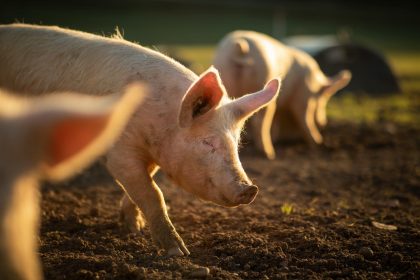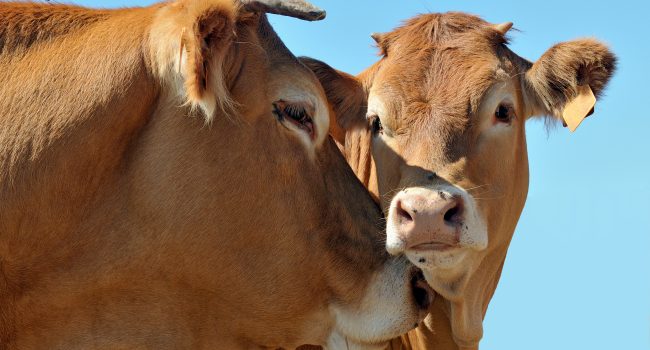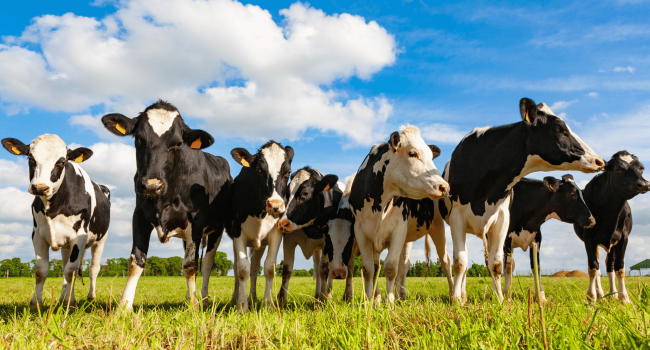According to the UN Food and Agriculture Organization, in 2019, pork was the most widely eaten meat worldwide (36%), followed by poultry (33%), beef (24%) and goat meat/mutton/lamb (5%).
The growing global human population will increase future demand for livestock products, and, in this respect, swine production provides humans with a source of animal protein, and may also constitute the main income for many farms and farming families around the world.
However, swine production systems have dramatically changed in the last three decades, now being confronted with the key challenges of maximizing feed efficiency while minimizing production costs and environmental impacts (Pomar and Remus, 2019).
The different dimensions of sustainability
Sustainable development has been defined as “development that meets the needs of the present without compromising the ability of future generations to meet their own needs” (Brundtland, 1987).
This definition is, however, not universal, as it covers environmental, economic, as well as social systems that differ widely among countries. In the context of animal production, specific aspects such as animal welfare, impacts on public health, and ethical considerations related to animal husbandry must also be taken into account, and may be in conflict with other aspects (Stern et al., 2005).
Specifically, in the case of modern swine production, major challenges include emissions of greenhouse gases, loss of biodiversity, and exhaustion of finite natural resources, and these challenges have to be dealt with for sustainable swine production in the future.
Furthermore, as this involves many farms across Europe, Africa, Eastern Asia, and America, the sustainability of swine production has an impact locally as well as globally.
The concept of sustainability in pig production thus needs to be split into several dimensions (Gunnarsson et al., 2020):
Environmental sustainability includes the management of harmful waste products and pollution, as well as impacts caused by feed production; in this regard, emissions of greenhouse gases and excess nutrients constitute a considerable environmental challenge, with potential solutions including the bioconversion of manure to biogas and bio-fertilizer (Chávez-Fuentes et al. 2019).
Another aspect, irrespective of geographical area, relates to the importance of preserving biological biodiversity, as the intensive use of scarce natural resources (land exploitation, large monocultures of grain and soybean, etc.) is another environmental concern frequently mentioned in connection with pig production (Gomiero et al., 2008).
Economic sustainability can be linked to economic output, productivity, and efficiency of the production process.
This can be illustrated, for example, by the prevention of zoonotic diseases, which has significant economic consequences (Narrod et al., 2012), as the improvement of pig health and immunity is not only an animal welfare issue, but it also affects the efficiency of the process.
Furthermore, reduced production efficiency often leads to inefficient resource use and hence higher environmental impacts per unit of meat produced.
Social sustainability is a complex dimension of pig production (Vallance et al., 2011). Issues can range from the widespread use of antibiotics to the various problems faced by staff in their working environment.
Societal acceptance of pig farming is thus fundamental for the survival of this form of agricultural production in the future (Broom, 2010).
Moreover, animal welfare has been proposed as a fourth dimension of sustainability, as “no system can be sustainable if a substantial proportion of people find aspects of it now, or of its consequences in the future, morally unacceptable” (Broom, 2010).
Animal welfare is often considered in association with the other dimensions of sustainability; for example, improved animal health and reduced use of antibiotics are not only important for pig welfare, but also for economic reasons (reduced costs, increased productivity, and product quality), social reasons (improved public health, public acceptance of production) and environmental reasons (increased resource efficiency, reduced drug residues, and resistant bacteria in soil) (Mie et al., 2017).
How can sustainability be achieved in pig production?
Based on a consumer survey in Norway, it was concluded (Austgulen et al., 2018) that consumers may still not be ready to make food choices based on what is best for the climate or the environment.
Therefore, increased sustainability will predominantly need to come from more sustainable swine production systems.
To achieve this, a first scenario can consist of a “high input/high output” system based on sustainable intensification, maximizing animal protein production efficiency on a limited land surface, while in parallel minimizing environmental impacts. Genetic improvement of the animals is key to improving the level of output, with the selection of sires for production traits (lean growth, carcass quality and feed efficiency), whereas dam line selection can focus on reproductive traits (fertility, age at puberty, number of piglets born alive, litter weight).
However, several studies suggest that animals in high-density stocking with genetically high levels of production are more sensitive to changes in the production environment; this is a problem which becomes relevant in the context of climate change, where animals are required to perform in a wide variety of, often suboptimal, environmental conditions (Knap and Wang, 2006).
The sustainability of this high-input/high-output system can be further improved by fine-tuning the use of inputs through precision agriculture, a management system based on continuous automatic real-time monitoring and control of production/reproduction, animal health and welfare, and the environmental impact of livestock production.
This “precision livestock farming” (PLF) can involve, for example, the application of water, nutrients, and pesticides only to the places and at the times that they are required (Godfray et al. 2010).
However, sustainable intensification still implies intensification of land use, increasing external inputs, and the use of high-yielding crop and animal varieties, which may be regarded as unsustainable in view of the risks for the environment (Van Grinsven et al., 2015).
A second scenario may thus be based on a “reduced input/reduced output” system based on selecting animals that are more robust to climate change and are better adapted to transform low quality feed (local feeds, feedstuff co-products, food waste) into meat.
As a result of reduced predicted yields and reduced production efficiency, together with higher costs resulting, for example, from the reorganization of the feed supply chains, the need to supplement for unbalanced nutrient quality or the pre-treatment of feedstuffs, the latter type of scenario may not be ideal (Depperman et al., 2018); however, recent technological and societal developments in food production and consumption patterns may open up new opportunities (Rauw et al., 2020) and lead to the design of new pig farming systems in which both production scenarios can co-exist.
Conclusion
Pig meat supplies energy, protein and important micronutrients, needed to feed the ever-growing human population which is projected to rise to almost 11 billion people by 2100.
Despite these multiple benefits of meat production, an increase in the number of livestock animals directly challenges the sustainability of animal production, which can be tackled via various scenarios, taking into account the many different aspects which exist within each dimension of sustainability in pig production.
![[EN] Blog Sustainability of Swine Production and the Dilemma of Feeding the World](https://www.premix.adm.com/wp-content/uploads/2023/01/Pigs-eating-on-a-meadow_AdobeStock_316101041-1-1800x600.jpeg)

![[EN] Blog Precision Feeding and Sustainable Swine Production](https://www.premix.adm.com/wp-content/uploads/2022/12/Three-pigs_AdobeStock_203591455-1-650x350.jpeg)

